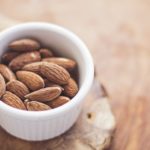by Michelle Sutton-Kerchner
Blood sugar levels affect everything from mood to weight loss success. Maintain healthy blood sugar levels, even if you do not have diabetes. Here’s how …
 Ongoing shifts in blood sugar levels occur throughout the day, even in the healthiest body. Lifestyle contributes to the stability level of your body’s sugar counts. Spikes and drops in blood sugar levels can cause overeating, fatigue, headaches, nausea, and jitters. Although these reactions are not necessarily a sign of diabetes, they do indicate a need for some healthy adjustments to diet and exercise.
Ongoing shifts in blood sugar levels occur throughout the day, even in the healthiest body. Lifestyle contributes to the stability level of your body’s sugar counts. Spikes and drops in blood sugar levels can cause overeating, fatigue, headaches, nausea, and jitters. Although these reactions are not necessarily a sign of diabetes, they do indicate a need for some healthy adjustments to diet and exercise.
Well-maintained blood sugar prevents overcompensation by the body’s cortisol, adrenaline, and insulin systems. Stable blood sugar levels prevent drops in energy level, improve brain and blood vessel health, and lift mood. (Everyone gets accused of being “hangry”—angry from hunger– sometimes.)
Cortisol and adrenaline pull from your body’s glycogen (stored sugar) and fat. They also can pull from the protein stores of your lean muscle mass. (All those reps wasted!) The body responds by releasing excessive insulin, which usually increases fat storage.
 Maintaining healthy cortisol and insulin levels helps lose fat and increase muscle at the cellular level. It also improves energy level, which makes workouts more effective, especially when a lack of energy may result in no workout at all. The cycle continues with a more restful sleep and healthier food choices. Better mood and sleep mean less need for comfort foods, which negatively impact blood sugar levels and waistline.
Maintaining healthy cortisol and insulin levels helps lose fat and increase muscle at the cellular level. It also improves energy level, which makes workouts more effective, especially when a lack of energy may result in no workout at all. The cycle continues with a more restful sleep and healthier food choices. Better mood and sleep mean less need for comfort foods, which negatively impact blood sugar levels and waistline.
Do Not Skip Meals
Skipping meals does not help weight loss. Experts indicate the opposite is true. Rather than skip meals, add them. Eat smaller, more frequent meals throughout the day. Healthy snacks or small meals every three to four hours usually satisfies appetite, maintains positive energy level, and helps promote fat loss.
This doesn’t mean you have to cook up several sides and a protein midday. Simply enjoy a hearty but healthy snack in place of your afternoon coffee and cookies and your morning donut. Skipping the sugar and caffeine drastically helps stabilize blood sugar. Keep your body busy digesting healthy fuel at regular intervals throughout the day.
Enjoy a Post-Meal Walk
 A study proved a 15-minute walk after each meal helps regulate blood sugar levels. For the most benefit, it is best to eat your meal, wait a half-hour, then walk at a moderate pace for 15 minutes. Done daily this is an effective way to help maintain healthy blood sugar levels. Muscle contractions help clear excess blood sugar, which can occur after meals, from your system.
A study proved a 15-minute walk after each meal helps regulate blood sugar levels. For the most benefit, it is best to eat your meal, wait a half-hour, then walk at a moderate pace for 15 minutes. Done daily this is an effective way to help maintain healthy blood sugar levels. Muscle contractions help clear excess blood sugar, which can occur after meals, from your system.
Monitor What You Eat
Limit sugary foods (pastries and desserts), simple carbs (white rice, white bread, and pasta), and starchy produce (peas, corn, potatoes). If you start the day with waffles or pancakes, pair with protein choices like turkey bacon, high-fiber fruit, or a hard-boiled egg. A sweet breakfast greets the day with a sugar spike, the energy-zapping aftermath for which you will try to compensate all day long.
Focus on whole grains, nuts, vegetables, and two or three pieces of high-fiber fruit daily. Although fruit is a power food, some choices are better for healthy blood sugar than others due to their varying natural sugar content.
Pack Protein
 Along with your wallet, keys, and phone don’t leave home without some protein. A high-protein snack helps prevent low blood sugar and its unpleasant symptoms of irritability, shakiness, and dizziness. Pack some whole wheat crackers with peanut butter, nuts, dried fruit, berries, or Greek yogurt (cold-pack needed). Protein bars are easily transportable and can deliver a healthy dose of protein. Just be aware of their sugar and calorie counts.
Along with your wallet, keys, and phone don’t leave home without some protein. A high-protein snack helps prevent low blood sugar and its unpleasant symptoms of irritability, shakiness, and dizziness. Pack some whole wheat crackers with peanut butter, nuts, dried fruit, berries, or Greek yogurt (cold-pack needed). Protein bars are easily transportable and can deliver a healthy dose of protein. Just be aware of their sugar and calorie counts.
Watch Cravings
If you’re hungry for starchy carbs or sugar shortly after finishing a meal, you probably surpassed your carb tolerance during that meal. Post-meal fatigue is also a sign of carb “overdose.” Adjust your carb intake during future meals to balance energy level and caloric needs. Focus on consuming more high-fiber, non-starchy veggies like broccoli and carrots. If weight loss is your goal, a post-meal snack attack is the last thing you want.
Stay in Shape
Frequent, moderate-level exercise causes muscles to use more of the sugar in your blood. This helps maintain consistently healthy blood sugar levels in the long-term. It also allows your body to more effectively use insulin. Both benefits last hours beyond your workout.
High-intensity workouts are not necessary to obtain this benefit. If your fitness routine is overly vigorous, the physical stress can trigger a spike in blood sugar. If you have diabetes, always monitor your blood sugar levels before, during, and after a workout.
 Keep It Steady
Keep It Steady
With a mindful approach to eating and some extra exercise, you can help blood sugar levels remain healthy. And that’s its own spike of sweetness!
Sources
Webmd.com
“Why Blood Sugar Matters for Fat Loss,” by Dr. Brooke Kalanick at livestrong.com.
“Worried about Type 2 Diabetes? Walk after Every Meal,” by Nanci Hellmich at usatoday.com.
“8 Tips to Avoid Blood Sugar Dips and Spikes,” by Mary Elizabeth Dallas at everydayhealth.com.
Image Credits
Healthy, energetic woman (introductory photo): pixabay.com/en/girl-woman-smile-beauty-1722402
Upward/downward swings: pixabay.com/en/background-abstract-cable-1088366
Autumn walk: pixabay.com/en/trees-autumn-away-road-sky-1030005
Almonds: pixabay.com/en/almonds-food-nuts-healthy-diet-768699
Fall foliage: photo by Jessica K.
 Fitness & Wellness News Your Source for Fitness News, Wellness News, Health News, and Nutrition News!
Fitness & Wellness News Your Source for Fitness News, Wellness News, Health News, and Nutrition News!




